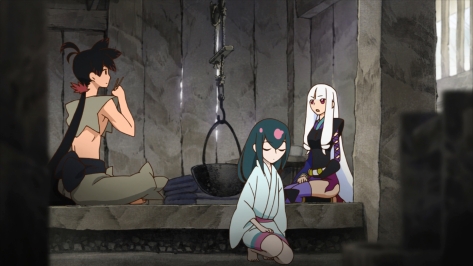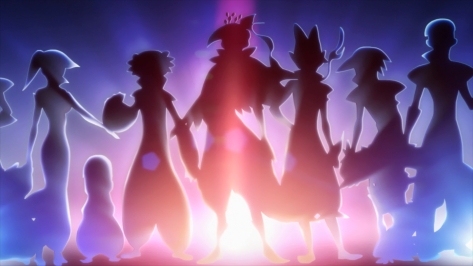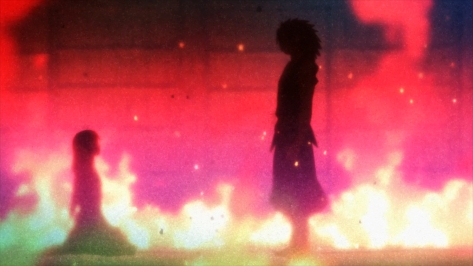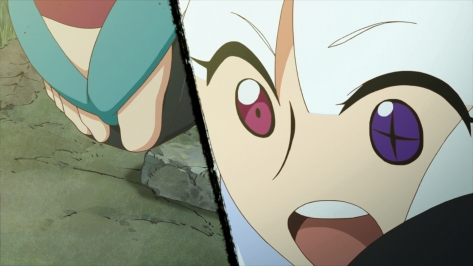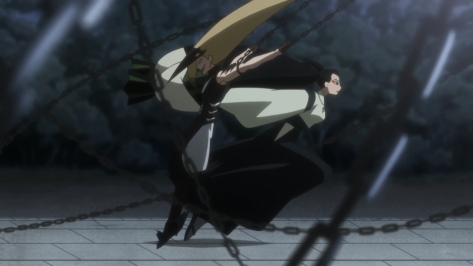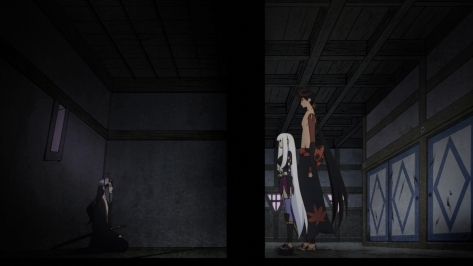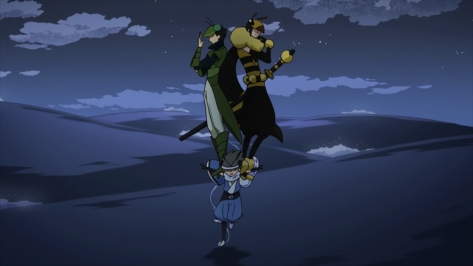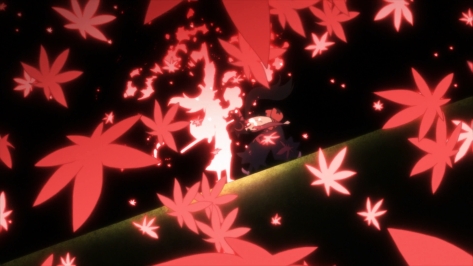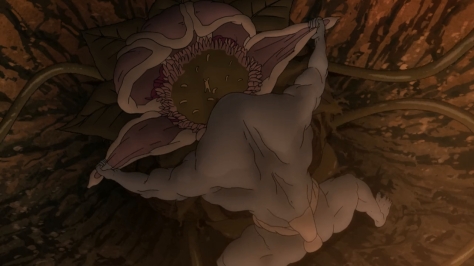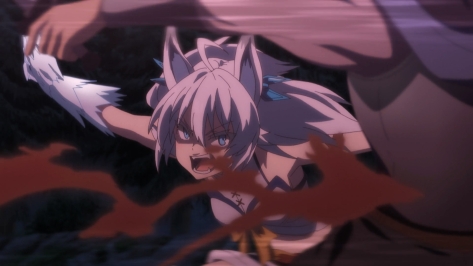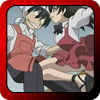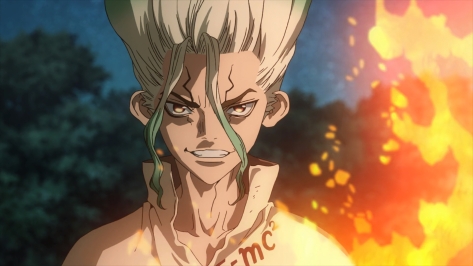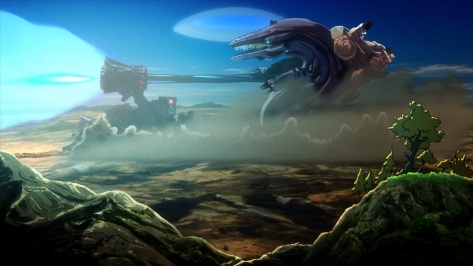Japanese Title: Katanagatari
Similar: Moribito: Guardian of the Spirit
Mononoke
Watched in: Japanese
Genre: Historical Action Adventure Romance
Length: 12 episodes (double length)
Positives:
- Storybook art
- Whimsical score
- Fairy tale stories
- Fun main duo
Negatives:
- Drags at times
(Request an anime for review here.)
Katanagatari is a series of fairy tale-like stories about a woman collecting the twelve “Deviant Blades” across Edo-era Japan (unaffiliated with the Bakemonogatari series – “gatari” means “story” in Japanese, so “Sword Story” in this case). This is based on real events from history, where a Japanese ruler would declare a “sword hunt” to confiscate all swords possessed by those not native to his territory, believing it would prevent them having the means to overthrow him. Togame, strategist to the shogunate, employs the help of Shichika, current master of the Kyotouryuu style that fights barehanded and turns the body itself into a blade.
The storybook art style is immediately striking and the only selling point I needed to try this anime (several readers have since requested it). One may think it cartoonish or that this is a small children’s anime, but children would find Katanagatari unbearably dull in truth. This is for a slightly older audience and the style fits the tone.
Despite the action sounding title, dialogue is the dominant form of this anime. Each episode is double length to fit the story associated with each sword in a single uninterrupted session. While I like this idea, I don’t feel each episode justifies the extra screen time, as it does drag often for a mere 12 episodes. A variable episode length would be better – I wish all series would do this, just like the variable length of book chapters. It took me a long time to finish this series (to be fair, life keeps getting in the way too). I recommend one episode per session. However, outside of that, I can’t present any other barriers to finishing the series. Katanagatari is a good anime.
First, the main duo is tons of fun. Shichika is muscle over brains taken to an almost extreme. “I’m bad at thinking” – his words. He’s also oblivious to how to treat Togame, the woman he claims to love. He’s humorously embarrassing. By contrast, Togame is all brains and no brawn. She’s a proper lady of good upbringing, unlike this hick country fella. Yet she trips on first meeting him. She talks too much, too many big words, is carried away with her monologues, and assumes other people’s answers only to realise she misheard a minute later. A perfect contrast to Shichika.
The meeting of this art style, whimsical score, and mystical stories reminds of fairy tales, as mentioned earlier, for which you need the right mindset. Each episode is about confronting an owner of one of these swords. Naturally, they are reluctant to relinquish their powerful weapons, so a conflict ensues. Sometimes it’s a typical action scene, though often there’s more thought to it, like a moral quandary or a puzzle to solve – as seen in fairy tales.
For example, one wielder is the last swordsman in a fallen kingdom swallowed by sand. He sits in a room in the castle with his sword at the ready, capable of slashing faster than light at anyone who dares enter. If you think logically, this falls apart. How does he eat? Go to the bathroom? Why don’t they fire a cannon from outside behind him? Those aren’t questions for this type of story. In Little Red Riding Hood, you don’t worry about how the hell a wolf could ever pass for an old granny. Approach Katanagatari with that mindset and you will have a good time. I mean, one guy punches with his guns. Need I say more?
Why is it okay to ignore those questions here but not in, say, Sword Art Online 2, you may ask? No story can encompass everything, account for every possibility, or factor in every detail from reality. Would make for rather boring stories. Instead, stories choose what focus on and the style in which to deliver the message, the morality, the character study, the action – whatever. Weak stories will either execute this vision poorly or sometimes not account for something that within the logic of its world breaks the story. Sword Art Online is garbage for many reasons, but the sword versus guns problem is idiotic because if a sword is so effective and bullets are so slow, why would anyone ever choose a gun in competitive play? By the logic established within that world, no one would use a gun.
Thankfully, Katanagatari isn’t Sword Art Online.
Overall Quality – High
Recommendation: Watch it. Katanagatari is unexpected in style and execution and I recommend it taken one episode per session. Cheerio!
(Request reviews here. Find out more about the rating system here.)
Awards: (hover over each award to see descriptions; click award for more recipients)
Positive:
Negative: None

